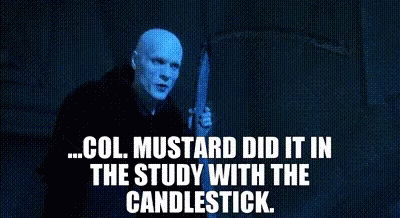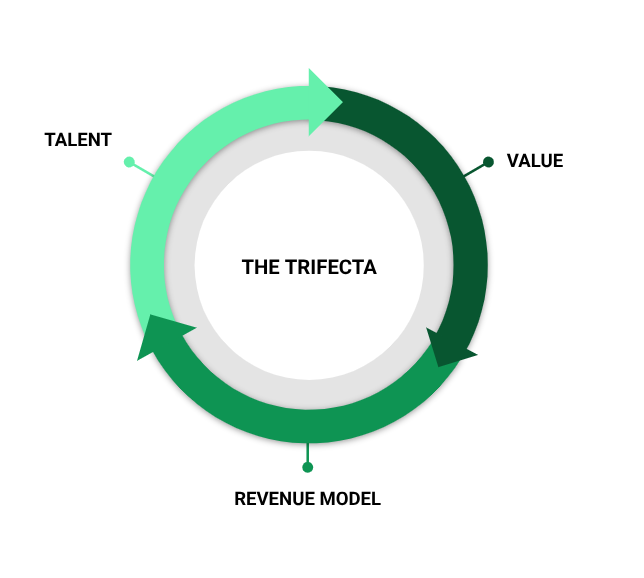Advertising's Ctrl-Alt-Del Moment
No, it's not dead. But it's looking in dire need of some serious CPR.
I’ve had this post in drafts for nearly two months now, and I’m sort of glad I did. Because every day has seen new headlines, new stories…and even greater indication that the industry many of us know and love is in a state of chaos.
I won’t say the dust has settled. That’s going to take a while. But a chapter has come to an end, with the announcement that Mark Read would be stepping down as WPP Chairman by the end of the year; hot on the heels of progress with the Omnicom-IPG merger.
And while I’ll never be in the “advertising is dead” camp — I mean, it’s the second-oldest profession, born out of the needs of the oldest — I will say that it needs a reboot.
The evidence couldn’t be more clear.
A few months ago, Campaign Asia put out their annual Agency Report Cards. This year’s report begins with a damning indictment.
2024 was a year that asked hard questions of the ad industry—and didn’t wait around for easy answers.
And then goes on to admit that it’s time for all of us to abandon Ostrich Mode and pull our heads out of the sand.
Few agencies fired on all cylinders, and while some proved the value of bold ideas, the bigger picture is harder to ignore: the industry’s challenges are no longer just financial, they are existential.
And finally, it predicts a tumultous future.
…2025 will redraw the map The impending IPG-OMG merger will redraw boundaries, business models will be torn down and rebuilt, and client loyalties will be tested in ways we can’t yet predict. Will true blue creativity stand out, or the might of scale and size? One thing is certain: those clinging to outdated practices are guaranteed to fail.
A few of us have been less sanguine, calling for change for some time now. I enjoy following pundits like Ivan Fernandes, who writes quite passionately about the ad agency business model and how it needs to change. And he’s not the only one.
But when Campaign Asia, a publication I’ve always perceived as more optimistic than realistic, says we should worry — then we should worry.
It’s really the perfect storm.
In conversation over the last year with current and former holding company leaders — some of whom are happy to have gotten out when they did, and some of whom have since set up their own independent shops — the challenge facing advertising isn’t simple. In fact, it’s probably more like a flywheel.
I’ll admit I’m still thinking much of this through…so bear with me as I wander down this rabbit hole.
Exhibit A: Value
In a LinkedIn post some time ago, I wrote about how most Marketers don’t even feel like they’re part of the advertising ecosystem.
And that’s probably because they place little to no value on their agencies.
Because, since the beginning of time, creative agencies haven’t yet figured out what their work is worth. Staggering down the path of media commissions to consulting-style, worker-hour based billing…and still not answering the fundamental question:
What is advertising worth to a client?
The typical creative agency fee pitch breaks down to two aspects:
The quality of the work presented, by…
…the talent they’re able to put on the business.
I’m not sure these are the same metrics Marketers are being evaluated against — in the market or in the boardroom.
After all, these are first-level input metrics, not outcome metrics — and we live in an outcome-oriented world.
I’d love to see a pitch where, somehow, agencies include second-level input metrics (more closely connected to outcomes) in their pitches. Some thoughts:
It’s not just about the idea. It’s about how much the idea scores on a pre-launch industry or client-standard creative test. This could be System1’s rating scale, or a test-and-control based brand tracking, or some kind of proven proprietary modelling the client has built. I mention running these before the campaign launches, so as to purely isolate the impact of the creative work.
It’s not just about the resourcing. It’s about how you can provide cost-efficient ways of working. This could mean leaner teams — always a win in my book — but also the right tooling — you didn’t think I'd skip talking about AI, did you? If done right, this could mean real dollar savings for clients, to be ploughed back into the campaign, or into other ventures — which hopefully the agency would be part of.
Both of these ideas link back to dollar outcomes — helping Marketers prove the value of their work, in turn, to those that control the budgets.
Exhibit B: Revenue Models
Naturally, proving Value has a direct impact on the Revenue Model an agency can operate with.
So far, the converse has been true. Margins have gotten finer, as agencies have struggled to justify why they should be paid the amount they’ve asked for. A few can get away with premium pricing — but they’re the exception, rather than the norm.
We’ve reached a point where agency remuneration has to be closely linked to clear business outcomes. There are two challenges I’ve experienced here, and an area I’m looking to learn more about.
Not every marketing objective is easily measurable. It’s easier to develop this model for campaigns focused on leads, clicks, conversions, and the like. It’s much harder when it comes to brand; and even more complex when you have to attribute impact across multiple creative agencies that contribute to a campaign. Maybe the answer lies in setting one overall goal — e.g. uplift in unaided awareness — and equally attributing it to all partners?
Do you reward high performance or penalise low performance? It’s all well and good to tell an agency, “Hey, we didn’t hit the goal, so you only get paid x% of your fee.” The truth is, the Marketer has been equally responsible for the work that went out the door. So it’s much fairer to say, “Hey, we didn’t hit the goal, so you only get your base-level fee, not the bonuses for achieving and over-achieving. We need to see better for the next campaign, or we’ll have to consider changing partners.” Of course, one hopes the Marketer is also held accountable for the work…
There are brands that have done this well. And agencies that have broken the model entirely — Spring Marketing Capital springs to mind (couldn’t resist).
But regardless of the how, agencies need to recognise the goal they play in helping businesses grow. And, collectively and fearlessly, beat the drum for change.
It’s the only way they’ll become growing businesses themselves.
Exhibit C: Talent
It’s easy to boil the talent crisis down to one statement:
Advertising doesn’t pay well anymore.
It’s much harder to acknowledge the multiple issues making up the talent crisis.
Yes, pay is one. And unless agencies solve for Revenue, they’ll continue to bleed talent. We’ve seen so many great people leave the seemingly secure network agencies to start their own shops, or go client-side. They’re thriving. Earning way more than they used to, making smart (and valuable) exits and…
Operating without constraints. Over the years, I’ve had several conversations with agency leaders working on our business, that have boiled down to, “I wish I could [do xyz] but my agency network’s seniormost leadership won’t let me.” And for senior folks to be held in chains, to not serve their clients to the fullest, because of HoldCo constraints, is criminal.
So many of those that are left don’t want to be in advertising. This to me feels like the saddest part. I was having coffee with the Chief Creative Officer of one of India’s leading agencies recently. This CCO is a partner-in-crime turned friend, and someone I admire and respect deeply. Among the many things he brought up was the fact that advertising people tend to look down upon what they’re doing. And are constantly aspiring to something else.
I’ll paraphrase our discussion:
Creative people are struggling to adapt to this “social-first” world. Nobody’s excited about making Reels. Everyone still wants to do that long-form emotional film. But that kind of work just doesn’t work anymore — it’s incredibly hard to get right.
Worse, every creative still wants to make a feature film. They aren’t in love with the business of commercial creativity — they still see advertising creativity as a pure art form.
It’s made worse when you think about what we’re rewarding. The kind of work Cannes awards and celebrates. We’re incentivising the wrong thing altogether. And that, in turn, sends the wrong signals to marketers — making it harder for us to communicate the value we bring.
It’s inexcusable that advertising hasn’t addressed a talent crisis that’s been in the making for decades. And the writing’s on the wall. When I started out, we all aspired to be the next Balki, Piyush or Prasoon. Is there anyone in India today, 22 years on, that commands that same level of aspiration?
The flywheel comes full circle. It goes without saying that unless agencies solve for Talent, they won’t be able to offer true Value.
It’s going to take a couple of years for the dust to settle.
I can only wonder what the landscape will look like in 2027. What the industry buzz around Cannes will be. What Campaign Asia’s Agency Report Cards will show up.
Every industry goes through churn. Some businesses make it out the other side transformed, stronger and more adaptable. Others stagger out, a ghost of a once-glorious past.
I have no insight to offer on where advertising will end up. All I know is that it will not look the same as it does today.
Samit





